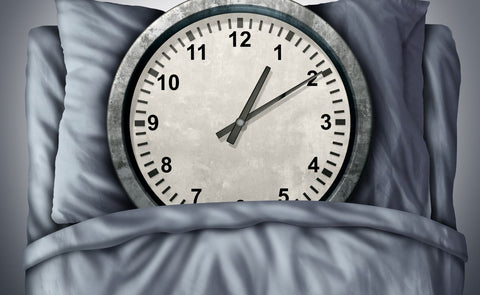Why Your Neck Changes Your Night
REM Sleep and Neck Support are inseparable when you want rich, refreshing dreams. The way you cradle your neck shapes how long you stay in the vivid, memory-building REM stage and how you feel once the alarm rings. Skimp on alignment, and you shave minutes—sometimes hours—off the deepest part of your nightly recharge.
What Exactly Is REM Sleep?
-
Rapid Eye Movement defined. During this stage your brain activity almost mirrors wakefulness, your eyes dart beneath closed lids, and you lock in memories from the day.
-
Timing. You run through 4-5 REM cycles a night, each lasting up to an hour toward morning. Miss even one cycle and mental sharpness drops.
-
Day-after pay-off. Solid REM boosts learning, mood control, and problem-solving.
Why Can a Crooked Neck Steal Your Dreams?
A bent or sagging neck forces micro-awakenings as muscles strain to support your head. Those tiny jolts push you out of REM before the cycle finishes, leaving you foggy at sunrise. In tests of ergonomic pillows, straighter cervical alignment cut nighttime movement and stretched total REM minutes.
Quick Check: Is Your Pillow Helping or Hurting?
Ask yourself:
|
Sign |
What You Feel at 7 a.m. |
|
Stiff neck |
You reach for pain gel before coffee |
|
Tingling arms |
Hands feel numb or “buzzing” |
|
Flip-flopping |
Sheets look wrestled, not rested |
|
Low REM on tracker |
Smartwatch shows <15 % REM time |
If two or more boxes hit, your neck isn’t getting the love it needs.
How to Pick Neck-Friendly Gear
Side Sleepers
You need extra loft to fill the gap between ear and shoulder. Aim for a medium-firm, curved pillow that holds the head level with the spine.
Back Sleepers
Go thinner. A gentle dip under the skull keeps your chin from tilting forward.
Stomach Sleepers
Flat or no pillow at all (and consider switching positions; stomach sleeping twists the neck). Research confirms that side and back positions cut strain and pain, while stomach sleeping does the opposite.
Bonus Features That Matter
-
Breathable foam or latex to keep temps steady
-
Removable, washable cover for hygiene
-
Trial window so you can test the fit at home
Simple Neck Routines Before Bed
-
Shoulder rolls – 10 slow circles each way
-
Chin tucks – Press chin toward throat for 5 seconds, repeat 5 times
-
Door-frame pec stretch – Hands on frame, lean forward 20 seconds
Loosening daytime tension lets muscles fully relax once you lie down.
Lifestyle Tweaks That Expand REM
-
Stick to one bedtime. Your body clock loves rhythm.
-
Keep the room cool (65-68 °F) and dark. Even dim LEDs cut melatonin production.
-
Screen off hour. Blue light delays REM; swap scrolling for reading.
-
Skip caffeine after lunch and large meals after 7 p.m.
-
Move daily. A brisk walk or light workout earlier in the day makes it easier to fall asleep later.
Track Your Progress
Use a sleep tracker or app for a two-week baseline, then note changes after upgrading your pillow and routine. Look for:
-
Higher REM percentage
-
Fewer overnight awakenings
-
Lower resting heart rate
-
Brighter mood scores
Small gains of even 10 % more REM often translate to clear focus and steadier emotions.
When to Chat with a Pro
Persistent neck pain, loud snoring, or daily grogginess despite good habits can hint at bigger issues like cervical disc problems or sleep apnea. A physical therapist or sleep doctor can dig deeper.
Your Next Great Night Starts Now
Give your neck the support it craves tonight and you’ll cash in on longer REM sleep tomorrow. Test-drive a pillow built for proper alignment, stick to a relaxing routine, and watch mornings turn from sluggish to sharp. Sweet dreams await—go claim them.


